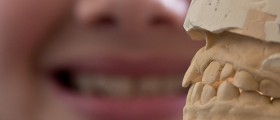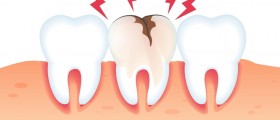I would love to!
I will post actual studies, articles by doctors, research, etc., seeing as the Guest who posted is looking for some scientific information on the dangers of fluoride.
by Paul Connett, PhD
"Water fluoridation is a peculiarly American phenomenon. It started at a time when Asbestos lined our pipes, lead was added to gasoline, PCBs filled our transformers and DDT was deemed so "safe and effective" that officials felt no qualms spraying kids in school classrooms and seated at picnic tables. One by one all these chemicals have been banned, but fluoridation remains untouched.
For over 50 years US government officials have confidently and enthusiastically claimed that fluoridation is "safe and effective". However, they are seldom prepared to defend the practice in open public debate. Actually, there are so many arguments against fluoridation that it can get overwhelming. "
Fluoridation is UNNECESSARY because:
1) Children can have perfectly good teeth without being exposed to fluoride.
2) The promoters (CDC, 1999, 2001) admit that the benefits are topical not systemic, so fluoridated toothpaste, which is universally available, is a more rational approach to delivering fluoride to the target organ (teeth) while minimizing exposure to the rest of the body.
3) The vast majority of western Europe has rejected water fluoridation, but has been equally successful as the US, if not more so, in tackling tooth decay.
4) If fluoride was necessary for strong teeth one would expect to find it in breast milk, but the level there is 0.01 ppm , which is 100 times LESS than in fluoridated tap water (IOM, 1997).
5) Children in non-fluoridated communities are already getting the so-called "optimal" doses from other sources (Heller et al, 1997). In fact, many are already being over-exposed to fluoride.
Fluoridation is INEFFECTIVE because:
1) Major dental researchers concede that fluoride's benefits are topical not systemic (Fejerskov 1981; Carlos 1983; CDC 1999, 2001; Limeback 1999; Locker 1999; Featherstone 2000).
2) Major dental researchers also concede that fluoride is ineffective at preventing pit and fissure tooth decay, which is 85% of the tooth decay experienced by children (JADA 1984; Gray 1987; White 1993; Pinkham 1999).
3) Several studies indicate that dental decay is coming down just as fast, if not faster, in non-fluoridated industrialized countries as fluoridated ones (Diesendorf, 1986; Colquhoun, 1994; World Health Organization, Online).
4) The largest survey conducted in the US showed only a minute difference in tooth decay between children who had lived all their lives in fluoridated compared to non-fluoridated communities. The difference was not clinically significant nor shown to be statistically significant (Brunelle & Carlos, 1990).
5) The worst tooth decay in the United States occurs in the poor neighborhoods of our largest cities, the vast majority of which have been fluoridated for decades.
6) When fluoridation has been halted in communities in Finland, former East Germany, Cuba and Canada, tooth decay did not go up but continued to go down (Maupome et al, 2001; Kunzel and Fischer, 1997, 2000; Kunzel et al, 2000 and Seppa et al, 2000).
Fluoridation is UNSAFE because:
1) It accumulates in our bones and makes them more brittle and prone to fracture. The weight of evidence from animal studies, clinical studies and epidemiological studies on this is overwhelming. Lifetime exposure to fluoride will contribute to higher rates of hip fracture in the elderly.
2) It accumulates in our pineal gland, possibly lowering the production of melatonin a very important regulatory hormone (Luke, 1997, 2001).
3) It damages the enamel (dental fluorosis) of a high percentage of children. Between 30 and 50% of children have dental fluorosis on at least two teeth in optimally fluoridated communities (Heller et al, 1997 and McDonagh et al, 2000).
4) There are serious, but yet unproven, concerns about a connection between fluoridation and osteosarcoma in young men (Cohn, 1992), as well as fluoridation and the current epidemics of both arthritis and hypothyroidism.
5) In animal studies fluoride at 1 ppm in drinking water increases the uptake of aluminum into the brain (Varner et al, 1998).
6) Counties with 3 ppm or more of fluoride in their water have lower fertility rates (Freni, 1994).
7) In human studies the fluoridating agents most commonly used in the US not only increase the uptake of lead into children's blood (Masters and Coplan, 1999, 2000) but are also associated with an increase in violent behavior.
8) The margin of safety between the so-called therapeutic benefit of reducing dental decay and many of these end points is either nonexistent or precariously low.
Fluoridation is UNSCIENTIFICALLY PROMOTED. For example:
1) In 1950, the US Public Health Service enthusiastically endorsed fluoridation before one single trial had been completed.
2) Even though we are getting many more sources of fluoride today than we were in 1945, the so called "optimal concentration" of 1 ppm has remained unchanged.
3) The US Public health Service has never felt obliged to monitor the fluoride levels in our bones even though they have known for years that 50% of the fluoride we swallow each day accumulates there.
4) Officials that promote fluoridation never check to see what the levels of dental fluorosis are in the communities before they fluoridate, even though they know that this level indicates whether children are being overdosed or not.
5) No US agency has yet to respond to Luke's finding that fluoride accumulates in the human pineal gland, even though her finding was published in 1994 (abstract), 1997 (Ph. D. thesis), 1998 (paper presented at conference of the International Society for Fluoride Research), and 2001 (published in Caries Research).
6) The CDC's 1999, 2001 reports advocating fluoridation were both six years out of date in the research they cited on health concerns.
I will post actual studies, articles by doctors, research, etc., seeing as the Guest who posted is looking for some scientific information on the dangers of fluoride.
by Paul Connett, PhD
"Water fluoridation is a peculiarly American phenomenon. It started at a time when Asbestos lined our pipes, lead was added to gasoline, PCBs filled our transformers and DDT was deemed so "safe and effective" that officials felt no qualms spraying kids in school classrooms and seated at picnic tables. One by one all these chemicals have been banned, but fluoridation remains untouched.
For over 50 years US government officials have confidently and enthusiastically claimed that fluoridation is "safe and effective". However, they are seldom prepared to defend the practice in open public debate. Actually, there are so many arguments against fluoridation that it can get overwhelming. "
Fluoridation is UNNECESSARY because:
1) Children can have perfectly good teeth without being exposed to fluoride.
2) The promoters (CDC, 1999, 2001) admit that the benefits are topical not systemic, so fluoridated toothpaste, which is universally available, is a more rational approach to delivering fluoride to the target organ (teeth) while minimizing exposure to the rest of the body.
3) The vast majority of western Europe has rejected water fluoridation, but has been equally successful as the US, if not more so, in tackling tooth decay.
4) If fluoride was necessary for strong teeth one would expect to find it in breast milk, but the level there is 0.01 ppm , which is 100 times LESS than in fluoridated tap water (IOM, 1997).
5) Children in non-fluoridated communities are already getting the so-called "optimal" doses from other sources (Heller et al, 1997). In fact, many are already being over-exposed to fluoride.
Fluoridation is INEFFECTIVE because:
1) Major dental researchers concede that fluoride's benefits are topical not systemic (Fejerskov 1981; Carlos 1983; CDC 1999, 2001; Limeback 1999; Locker 1999; Featherstone 2000).
2) Major dental researchers also concede that fluoride is ineffective at preventing pit and fissure tooth decay, which is 85% of the tooth decay experienced by children (JADA 1984; Gray 1987; White 1993; Pinkham 1999).
3) Several studies indicate that dental decay is coming down just as fast, if not faster, in non-fluoridated industrialized countries as fluoridated ones (Diesendorf, 1986; Colquhoun, 1994; World Health Organization, Online).
4) The largest survey conducted in the US showed only a minute difference in tooth decay between children who had lived all their lives in fluoridated compared to non-fluoridated communities. The difference was not clinically significant nor shown to be statistically significant (Brunelle & Carlos, 1990).
5) The worst tooth decay in the United States occurs in the poor neighborhoods of our largest cities, the vast majority of which have been fluoridated for decades.
6) When fluoridation has been halted in communities in Finland, former East Germany, Cuba and Canada, tooth decay did not go up but continued to go down (Maupome et al, 2001; Kunzel and Fischer, 1997, 2000; Kunzel et al, 2000 and Seppa et al, 2000).
Fluoridation is UNSAFE because:
1) It accumulates in our bones and makes them more brittle and prone to fracture. The weight of evidence from animal studies, clinical studies and epidemiological studies on this is overwhelming. Lifetime exposure to fluoride will contribute to higher rates of hip fracture in the elderly.
2) It accumulates in our pineal gland, possibly lowering the production of melatonin a very important regulatory hormone (Luke, 1997, 2001).
3) It damages the enamel (dental fluorosis) of a high percentage of children. Between 30 and 50% of children have dental fluorosis on at least two teeth in optimally fluoridated communities (Heller et al, 1997 and McDonagh et al, 2000).
4) There are serious, but yet unproven, concerns about a connection between fluoridation and osteosarcoma in young men (Cohn, 1992), as well as fluoridation and the current epidemics of both arthritis and hypothyroidism.
5) In animal studies fluoride at 1 ppm in drinking water increases the uptake of aluminum into the brain (Varner et al, 1998).
6) Counties with 3 ppm or more of fluoride in their water have lower fertility rates (Freni, 1994).
7) In human studies the fluoridating agents most commonly used in the US not only increase the uptake of lead into children's blood (Masters and Coplan, 1999, 2000) but are also associated with an increase in violent behavior.
8) The margin of safety between the so-called therapeutic benefit of reducing dental decay and many of these end points is either nonexistent or precariously low.
Fluoridation is UNSCIENTIFICALLY PROMOTED. For example:
1) In 1950, the US Public Health Service enthusiastically endorsed fluoridation before one single trial had been completed.
2) Even though we are getting many more sources of fluoride today than we were in 1945, the so called "optimal concentration" of 1 ppm has remained unchanged.
3) The US Public health Service has never felt obliged to monitor the fluoride levels in our bones even though they have known for years that 50% of the fluoride we swallow each day accumulates there.
4) Officials that promote fluoridation never check to see what the levels of dental fluorosis are in the communities before they fluoridate, even though they know that this level indicates whether children are being overdosed or not.
5) No US agency has yet to respond to Luke's finding that fluoride accumulates in the human pineal gland, even though her finding was published in 1994 (abstract), 1997 (Ph. D. thesis), 1998 (paper presented at conference of the International Society for Fluoride Research), and 2001 (published in Caries Research).
6) The CDC's 1999, 2001 reports advocating fluoridation were both six years out of date in the research they cited on health concerns.
Loading...
Republic Magazine, Issue 13, pages 6-10
February 26, 2009
Fluoridation Gamble Fails the Test of Time
By Paul Connett, PhD
Director, Fluoride Action Network
A little history
Water fluoridation began in the United States where today approximately 184 million people are currently served by fluoridated water supplies.
The practice had it origins in observations made by researchers who were investigating the cause of a strange mottling and discoloration of the teeth in children living in parts of Colorado, Texas, and some other areas in the US.
In 1931, fluoride was found to be the cause of this condition and it was renamed “dental fluorosis.”
McKay, a dentist, and other researchers, noted that while the teeth looked horrible, these children had less tooth decay. These early researchers assumed that because fluoride mottled teeth it must also be the reason these teeth didn’t decay. However, they overlooked high amounts of calcium and other tooth-building nutrients in the water. They didn’t know what we know now - fluoride is neither a nutrient nor required for healthy teeth.
H. Trendley Dean of the US Public Health Service (PHS) pursued the matter. He characterized dental fluorosis into 4 levels of severity – very mild, mild, moderate and severe. Then in 1942 he produced his famous 21-City study that purported to show, that as the fluoride in the water increased, tooth decay went down. The decay decreased sharply from 0 to 1 ppm (1 ppm = 1 milligram of fluoride per liter) and then flattened off (see Figure 1). He also noted that at 1 ppm only about 10% of children were impacted with dental fluorosis. Thus was born the notion of the “optimal” level of fluoride being1 ppm.
Trials of artificial fluoridation began in 1945 in Grand Rapids, Michigan, Newburgh, NY, and Brantford, Ontario, using water-soluble sodium fluoride (not the naturally occurring calcium fluoride).
The Great Fluoridation Gamble
In 1950, before any of these trials had been completed, the PHS endorsed fluoridation. By so doing, they were taking a huge gamble on four fronts, 1) that swallowing fluoride actually reduced tooth decay, 2) that it would only lead to about 10% of children developing dental fluorosis in its mildest form, 3) that when a child developed dental fluorosis, no damage was being done to any other growing tissue in its body and 4) that fluoride would have no ill effect on adults.
This clearly was not a scientific decision, because the science wasn’t in, since neither the trials nor any health studies had been completed. What the PHS did know was that dental fluorosis was a systemic effect, meaning that fluoride had to enter the body to cause the damage to the growing tooth cells. Thus the key gamble made by the PHS in 1950 was that fluoride could damage the child’s growing tooth cells, by some undetermined biochemical mechanism, without damaging any other growing tissues or organs in the child’s body.
The great fluoridation gamble has failed
Over the 60 years since fluoridation began, dental fluorosis rates in the US have skyrocketed. A recent report shows that 32% of children in the US now have dental fluorosis, and not all restricted to the very mild level category. 3-4% have dental fluorosis in its moderate and severe levels (CDC, 2005). This is due to more sources of fluoride available today (toothpaste and other dental products; pesticide residues and processed food and beverages made produced in fluoridated areas).
Starting in the 1980’s, studies have shown little, if any, difference in tooth decay between fluoridated and non-fluoridated communities, states or countries. According to a review by Dr. David Locker of the University of Toronto, conducted for the Ontario Government: “The magnitude of [fluoridation’s] effect is not large in absolute terms, is often not statistically significant, and may not be of clinical significance.”
A recent article in the British Medical Journal shows that, according to World Health Organization (WHO) data, tooth decay in 12-year olds has been coming down as fast in non-fluoridated countries as fluoridated ones (Cheng et al., 2007). A similar plot is shown in Figure 2. Furthermore, the early trials have been shown to be riddled with methodological weaknesses (Sutton, 1996), and the findings of Dean’s 21-city study have been seriously questioned (Ziegelbecker, 1981).
Most serious is the growing body of evidence that fluoridation is harmful to health. Fluoride accumulates in the bones and the first symptoms of damage are identical to the symptoms of arthritis: aching joints and bones. Further accumulation makes the bones more brittle and may lead to a possible increase in hip fractures in the elderly. The evidence for this is mixed.
Fluoride was once used by European doctors to lower the thyroid function of patients suffering from hyperthyroidism and the doses used are reached by some individuals in fluoridated communities. In the US, millions of people suffer from hypothyroidism, and even more with subclinical hypothyroidism, for which the symptoms are tiredness not relieved with sleep, lethargy, obesity, and depression.
There are over 50 animal studies that show that fluoride damages the brain and changes behavior. Studies from China indicate that fluoride damages the fetal brain and there are now a total of 23 studies (from China, India, Iran and Mexico) indicating that high fluoride exposure is associated with a lowering of IQ in children.
If you don’t look, you don’t find
For over 60 years, those who have jealousy guarded the practice of fluoridation in the PHS have failed to fund serious health studies. The vast majority of research money goes into endless studies on teeth (see CARTOON), as if it was the only organ in the body. No studies have investigated a possible relationship between fluoridation and the numerous illnesses and impacts discussed above, which affect millions of Americans and at increasing rates, even though fluoride exposure may be one contributory cause.
Even the most basic studies have not been done. For example, no comprehensive survey of fluoride bone levels has been undertaken to see if some people are reaching damaging levels. Nor has there been a monitoring program of fluoride levels in people’s blood and urine. More seriously, studies have not been done on a number of childhood conditions using the severity of dental fluorosis as a biomarker of exposure. All of these failures to do the obvious allow fluoridation promoters to say, “We have been fluoridating the water for over 60 years and we don’t see any health problems”, yet if you don’t look, you don’t find.
Where studies have been done, they have been done largely in countries that do not have a fluoridation program to protect, especially India and China, where there are large areas that have high natural levels of fluoride in the water and are endemic for both dental and skeletal fluorosis. For many years, the US has ignored these studies, claiming that they are not relevant here, because people in these countries drink excessive amounts of water because of the hot climates and have a poor diet, which exacerbates fluoride’s toxicity.
A reason why many Western academics have remained oblivious of these health effects is because Fluoride, the journal of the International Society for Fluoride Research, which has published many important studies, has been excluded from PubMed (the primary medical literature search engine) since the journal began publishing in 1968. Why such a journal, which has peer review, carries no advertising and publishes articles both for and against fluoridation, should be excluded from this important search engine is both puzzling and disturbing. Especially so, when PubMed includes dental trade journals and popular magazines of no academic standing.
Instead of conducting health studies in fluoridated countries, the health issue is usually resolved with review panels made up of government employees and supporters of the fluoridation program. Their conclusions about the safety and effectiveness of fluoridation are predictable. The Irish Fluoridation Forum Report of 2002 is a classic example.
The scientific breakthrough
The scientific breakthrough came in 2003, when at the request of the US EPA, the National Research Council (of the National Academies) reviewed the toxicology of fluoride in water. For the first time in reviews of this kind, the 12-membered panel was truly balanced. Their brief was not to look at the safety of fluoridation per se, but rather to examine the safety of the drinking water standard for fluoride, currently set at 4 ppm. It took the panel three and half years to complete their report and when it was published on March 22, 2006, it was 507 pages long and had over 1000 references.
The panel concluded that the safe drinking water standard for fluoride (4 ppm) was not protective of health and recommended that the US EPA perform a health risk assessment to determine a new MCLG (maximum contaminant level goal). The MCLG is a goal based on the lowest averse effect level, with safety factors applied to protect the most vulnerable individuals in society from known and reasonably anticipated health effects. The MCL is a legally enforceable standard and takes into account the economic costs of removing a pollutant.
Re-enter the politics
Risk assessment specialist Dr. Robert Carton, a former employee of the EPA, has examined the findings of the review panel and argues that the MCLG should be set at zero (Carton, 2006). However, were the EPA to set the MCLG at zero, it would scuttle the fluoridation program overnight. This may explain why after 33 months the EPA has published nothing. This delay appears to be one of many examples of where politics trumps science on this issue.
More politics were revealed by the manner in which the leading proponents of fluoridation treated the NRC report. On the day it was released, the American Dental Association (ADA) declared that the report was irrelevant to fluoridation and six days later, the Centers for Disease Control and Prevention (CDC) declared that it “was consistent” with its promotion of fluoridation at 1 ppm!
In those six days, the CDC did not have time to digest this report, let alone the 1000 references it contained. Nor could it have done the risk assessment recommended by the NRC – a task that has already taken the EPA nearly three years.
All of this may seem very puzzling to someone new to this issue, until they find out just which people at the CDC reached such a rapid conclusion.
The CDC’s Oral Health Division
The CDC has only one division that deals with fluoridation. This is the Oral Health Division (OHD), which is largely staffed by people with dental credentials. They have few staff with expertise in medicine and no toxicologists and risk assessment specialists. In short, they have no one qualified to make the judgment they made. Moreover, there is no one at the CDC – independent of the OHD - overseeing the safety of the fluoridation program.
The OHD has a huge conflict of interest in this matter. They avidly promote fluoridation. They give awards to communities and states based upon their adoption of the practice. They even send out their top personnel to state legislatures to support mandatory statewide fluoridation bills. To all intents and purposes the OHD is an adjunct of the ADA.
Most members of the public and the media know little of this background, so when the CDC makes pronouncements about the “safety and effectiveness” of fluoridation, journalists and officials take it at face value. Not a day goes by without someone in the world citing the CDC’s statement that fluoridation is “One of the top ten public health achievements of the 20th Century” (CDC, 1999). Those that cite this probably have no idea how incredibly poor the analysis was that supported this statement. The report was not externally peer reviewed, was six years out of date on health studies and the graphical evidence it offered to support the effectiveness of fluoridation was laughable and easily refuted by examining the WHO data base, compare FIGURES 2 and 3.
The publication of the NRC (2006) report should have ended fluoridation overnight. Among other things, the review showed how little serious research had been carried out in fluoridated countries. This is what the chairman of the panel, Dr. John Doull, had to say:
“What the committee found is that we’ve gone with the
status quo regarding fluoride for many years-for too long,
and now we need to take a fresh look…In the scientific
community, people tend to think this is settled. I mean,
when the U.S. surgeon general comes out and says this is
one of the 10 greatest achievements of the 20th century,
that’s a hard hurdle to get over. But when we looked at the
studies that have been done, we found that many of these
questions are unsettled and we have much less information
than we should, considering how long this [fluoridation]
has been going on.” ( Scientific American , Jan. 2008)
Based upon the levels at which health effects occur, there is simply not an adequate margin to protect every individual in society drinking uncontrolled amounts of fluoridated water, especially vulnerable subsets of the population. The ADA has virtually admitted as much by advising parents not to use fluoridated tap water to make up baby formula (ADA, 2006).
Other reasons for ending fluoridation
There have been other moments that should have ended fluoridation. One of these was the concession by the CDC in 1999, that the promoters had got the mechanism of fluoride’s beneficial action wrong for over 50 years. They now admit that fluoride works topically, not systemically. In other words, it works on the outside of the tooth, not from inside the body. It simply does not make sense to swallow fluoride.
In a videotaped interview in 2005, Dr. Arvid Carlsson, who led the successful fight against fluoridation in Sweden in the 1970s and was awarded the Nobel Prize for Medicine in 2000, stated that:
“In pharmacology, if the effect is local (topical), it’s awkward to use it
in any other way than as a local treatment. I mean this is obvious. You
have the teeth there, they’re available for you, why drink the stuff?”
There are three other important reasons why fluoridation should be ended.
1 • Fluoridation is bad medical practice.
While it is possible to control the concentration (mg per liter) of the fluoride added at the water works, it is impossible to control the dose (mg per day) individuals get, because it is impossible to control how much people drink and how much fluoride they get from other sources.
Fluoridation defies many aspects of medical practice. As Dr. Peter Mansfield, a physician and advisory board member for the important York Review (McDonagh et al., 2000), stated:
“No physician in his right senses would prescribe for a person he has
never met, whose medical history he does not know, a substance which
is intended to create bodily change, with the advice: ‘Take as much as
you like, and you will take it for the rest of your life, because some
children suffer from tooth decay.’ It is a preposterous notion.”
2 • Fluoridation is unethical.
Fluoridation is unethical because it violates the individual’s right to informed consent to medication, one of the key ethical planks of modern medicine. Fluoridation allows decision makers, without medical qualifications, to do to the whole community what an individual doctor cannot do to an individual patient.
3 • Fluoridation disregards an important message from nature.
The average level in mothers’ milk is extremely low 0.004 ppm). This means that a bottle fed baby for which the formula has been made up with fluoridated water is going to get 250 times more fluoride than nature intended. Nature is clearly telling us that the baby does not need fluoride for healthy teeth or any other organ in the body. It might also be telling us that there are strong reasons to keep fluoride away from the baby’s developing tissues, especially the brain. The fact that there are now 23 studies indicating that fluoride may lower IQ, may be a sad confirmation of that possibility.
Summary
Fluoridation is a bad medical practice. It is unethical, ineffective, and poses serious health dangers, especially for vulnerable subsets of the population. Instead of science, in fluoridated countries we get promotion via a long list of dated endorsements, from associations and agencies, most of which are not on top of the current primary literature and who take the word of the ADA and CDC on this issue, at face value.
Unfortunately, because government officials have put so much of their credibility on the line promoting and defending fluoridation, it is difficult for them now to admit that this practice was a huge mistake.
However, we need to restore the public’s trust in the agencies that are supposed to protect our health. Ending fluoridation is a great place to start this restoration.
For those who fear a dental crisis if fluoridation is stopped, it should be noted that at least 5 modern studies have shown that when fluoridation is stopped, tooth decay has not gone up.
In the past, 14 Nobel Prize winners have either opposed fluoridation or have expressed serious reservations about the practice. They have now been joined by over 2000 professionals, who have signed a statement calling for the end of fluoridation worldwide. See:
President Obama says that he wants sound science underpinning governmental policies. Hopefully, he will encourage Congress to hold hearings in which CDC officials are required to provide the scientific basis for their continued promotion of this outdated practice.
For further information on the fluoridation issue go to:
––––––––––––––––––––––––––––––––––––––––––
Dr. Paul Connett is a graduate of Cambridge University and holds a Ph.D. in chemistry from
Dartmouth College. In May 2006, he retired from his full professorship in chemistry at St. Lawrence
University, Canton, NY, where he taught for 23 years. His specialty was environmental chemistry
and toxicology. Over the past 24 years, his research on waste management has taken him to 49 US
states and 50 other countries, where he has given approximately 2000 pro bono public presentations.
Ralph Nader said of Paul Connett, “He is the only person I know who can make waste interesting.” He
has co-authored 6 peer reviewed articles on dioxin and numerous other articles on waste management.
Dr. Connett edits the bulletins for the Fluoride Action Network. To date over 1000 of these bulletins
have been distributed.
***edited by moderator*** web addresses not allowed
February 26, 2009
Fluoridation Gamble Fails the Test of Time
By Paul Connett, PhD
Director, Fluoride Action Network
A little history
Water fluoridation began in the United States where today approximately 184 million people are currently served by fluoridated water supplies.
The practice had it origins in observations made by researchers who were investigating the cause of a strange mottling and discoloration of the teeth in children living in parts of Colorado, Texas, and some other areas in the US.
In 1931, fluoride was found to be the cause of this condition and it was renamed “dental fluorosis.”
McKay, a dentist, and other researchers, noted that while the teeth looked horrible, these children had less tooth decay. These early researchers assumed that because fluoride mottled teeth it must also be the reason these teeth didn’t decay. However, they overlooked high amounts of calcium and other tooth-building nutrients in the water. They didn’t know what we know now - fluoride is neither a nutrient nor required for healthy teeth.
H. Trendley Dean of the US Public Health Service (PHS) pursued the matter. He characterized dental fluorosis into 4 levels of severity – very mild, mild, moderate and severe. Then in 1942 he produced his famous 21-City study that purported to show, that as the fluoride in the water increased, tooth decay went down. The decay decreased sharply from 0 to 1 ppm (1 ppm = 1 milligram of fluoride per liter) and then flattened off (see Figure 1). He also noted that at 1 ppm only about 10% of children were impacted with dental fluorosis. Thus was born the notion of the “optimal” level of fluoride being1 ppm.
Trials of artificial fluoridation began in 1945 in Grand Rapids, Michigan, Newburgh, NY, and Brantford, Ontario, using water-soluble sodium fluoride (not the naturally occurring calcium fluoride).
The Great Fluoridation Gamble
In 1950, before any of these trials had been completed, the PHS endorsed fluoridation. By so doing, they were taking a huge gamble on four fronts, 1) that swallowing fluoride actually reduced tooth decay, 2) that it would only lead to about 10% of children developing dental fluorosis in its mildest form, 3) that when a child developed dental fluorosis, no damage was being done to any other growing tissue in its body and 4) that fluoride would have no ill effect on adults.
This clearly was not a scientific decision, because the science wasn’t in, since neither the trials nor any health studies had been completed. What the PHS did know was that dental fluorosis was a systemic effect, meaning that fluoride had to enter the body to cause the damage to the growing tooth cells. Thus the key gamble made by the PHS in 1950 was that fluoride could damage the child’s growing tooth cells, by some undetermined biochemical mechanism, without damaging any other growing tissues or organs in the child’s body.
The great fluoridation gamble has failed
Over the 60 years since fluoridation began, dental fluorosis rates in the US have skyrocketed. A recent report shows that 32% of children in the US now have dental fluorosis, and not all restricted to the very mild level category. 3-4% have dental fluorosis in its moderate and severe levels (CDC, 2005). This is due to more sources of fluoride available today (toothpaste and other dental products; pesticide residues and processed food and beverages made produced in fluoridated areas).
Starting in the 1980’s, studies have shown little, if any, difference in tooth decay between fluoridated and non-fluoridated communities, states or countries. According to a review by Dr. David Locker of the University of Toronto, conducted for the Ontario Government: “The magnitude of [fluoridation’s] effect is not large in absolute terms, is often not statistically significant, and may not be of clinical significance.”
A recent article in the British Medical Journal shows that, according to World Health Organization (WHO) data, tooth decay in 12-year olds has been coming down as fast in non-fluoridated countries as fluoridated ones (Cheng et al., 2007). A similar plot is shown in Figure 2. Furthermore, the early trials have been shown to be riddled with methodological weaknesses (Sutton, 1996), and the findings of Dean’s 21-city study have been seriously questioned (Ziegelbecker, 1981).
Most serious is the growing body of evidence that fluoridation is harmful to health. Fluoride accumulates in the bones and the first symptoms of damage are identical to the symptoms of arthritis: aching joints and bones. Further accumulation makes the bones more brittle and may lead to a possible increase in hip fractures in the elderly. The evidence for this is mixed.
Fluoride was once used by European doctors to lower the thyroid function of patients suffering from hyperthyroidism and the doses used are reached by some individuals in fluoridated communities. In the US, millions of people suffer from hypothyroidism, and even more with subclinical hypothyroidism, for which the symptoms are tiredness not relieved with sleep, lethargy, obesity, and depression.
There are over 50 animal studies that show that fluoride damages the brain and changes behavior. Studies from China indicate that fluoride damages the fetal brain and there are now a total of 23 studies (from China, India, Iran and Mexico) indicating that high fluoride exposure is associated with a lowering of IQ in children.
If you don’t look, you don’t find
For over 60 years, those who have jealousy guarded the practice of fluoridation in the PHS have failed to fund serious health studies. The vast majority of research money goes into endless studies on teeth (see CARTOON), as if it was the only organ in the body. No studies have investigated a possible relationship between fluoridation and the numerous illnesses and impacts discussed above, which affect millions of Americans and at increasing rates, even though fluoride exposure may be one contributory cause.
Even the most basic studies have not been done. For example, no comprehensive survey of fluoride bone levels has been undertaken to see if some people are reaching damaging levels. Nor has there been a monitoring program of fluoride levels in people’s blood and urine. More seriously, studies have not been done on a number of childhood conditions using the severity of dental fluorosis as a biomarker of exposure. All of these failures to do the obvious allow fluoridation promoters to say, “We have been fluoridating the water for over 60 years and we don’t see any health problems”, yet if you don’t look, you don’t find.
Where studies have been done, they have been done largely in countries that do not have a fluoridation program to protect, especially India and China, where there are large areas that have high natural levels of fluoride in the water and are endemic for both dental and skeletal fluorosis. For many years, the US has ignored these studies, claiming that they are not relevant here, because people in these countries drink excessive amounts of water because of the hot climates and have a poor diet, which exacerbates fluoride’s toxicity.
A reason why many Western academics have remained oblivious of these health effects is because Fluoride, the journal of the International Society for Fluoride Research, which has published many important studies, has been excluded from PubMed (the primary medical literature search engine) since the journal began publishing in 1968. Why such a journal, which has peer review, carries no advertising and publishes articles both for and against fluoridation, should be excluded from this important search engine is both puzzling and disturbing. Especially so, when PubMed includes dental trade journals and popular magazines of no academic standing.
Instead of conducting health studies in fluoridated countries, the health issue is usually resolved with review panels made up of government employees and supporters of the fluoridation program. Their conclusions about the safety and effectiveness of fluoridation are predictable. The Irish Fluoridation Forum Report of 2002 is a classic example.
The scientific breakthrough
The scientific breakthrough came in 2003, when at the request of the US EPA, the National Research Council (of the National Academies) reviewed the toxicology of fluoride in water. For the first time in reviews of this kind, the 12-membered panel was truly balanced. Their brief was not to look at the safety of fluoridation per se, but rather to examine the safety of the drinking water standard for fluoride, currently set at 4 ppm. It took the panel three and half years to complete their report and when it was published on March 22, 2006, it was 507 pages long and had over 1000 references.
The panel concluded that the safe drinking water standard for fluoride (4 ppm) was not protective of health and recommended that the US EPA perform a health risk assessment to determine a new MCLG (maximum contaminant level goal). The MCLG is a goal based on the lowest averse effect level, with safety factors applied to protect the most vulnerable individuals in society from known and reasonably anticipated health effects. The MCL is a legally enforceable standard and takes into account the economic costs of removing a pollutant.
Re-enter the politics
Risk assessment specialist Dr. Robert Carton, a former employee of the EPA, has examined the findings of the review panel and argues that the MCLG should be set at zero (Carton, 2006). However, were the EPA to set the MCLG at zero, it would scuttle the fluoridation program overnight. This may explain why after 33 months the EPA has published nothing. This delay appears to be one of many examples of where politics trumps science on this issue.
More politics were revealed by the manner in which the leading proponents of fluoridation treated the NRC report. On the day it was released, the American Dental Association (ADA) declared that the report was irrelevant to fluoridation and six days later, the Centers for Disease Control and Prevention (CDC) declared that it “was consistent” with its promotion of fluoridation at 1 ppm!
In those six days, the CDC did not have time to digest this report, let alone the 1000 references it contained. Nor could it have done the risk assessment recommended by the NRC – a task that has already taken the EPA nearly three years.
All of this may seem very puzzling to someone new to this issue, until they find out just which people at the CDC reached such a rapid conclusion.
The CDC’s Oral Health Division
The CDC has only one division that deals with fluoridation. This is the Oral Health Division (OHD), which is largely staffed by people with dental credentials. They have few staff with expertise in medicine and no toxicologists and risk assessment specialists. In short, they have no one qualified to make the judgment they made. Moreover, there is no one at the CDC – independent of the OHD - overseeing the safety of the fluoridation program.
The OHD has a huge conflict of interest in this matter. They avidly promote fluoridation. They give awards to communities and states based upon their adoption of the practice. They even send out their top personnel to state legislatures to support mandatory statewide fluoridation bills. To all intents and purposes the OHD is an adjunct of the ADA.
Most members of the public and the media know little of this background, so when the CDC makes pronouncements about the “safety and effectiveness” of fluoridation, journalists and officials take it at face value. Not a day goes by without someone in the world citing the CDC’s statement that fluoridation is “One of the top ten public health achievements of the 20th Century” (CDC, 1999). Those that cite this probably have no idea how incredibly poor the analysis was that supported this statement. The report was not externally peer reviewed, was six years out of date on health studies and the graphical evidence it offered to support the effectiveness of fluoridation was laughable and easily refuted by examining the WHO data base, compare FIGURES 2 and 3.
The publication of the NRC (2006) report should have ended fluoridation overnight. Among other things, the review showed how little serious research had been carried out in fluoridated countries. This is what the chairman of the panel, Dr. John Doull, had to say:
“What the committee found is that we’ve gone with the
status quo regarding fluoride for many years-for too long,
and now we need to take a fresh look…In the scientific
community, people tend to think this is settled. I mean,
when the U.S. surgeon general comes out and says this is
one of the 10 greatest achievements of the 20th century,
that’s a hard hurdle to get over. But when we looked at the
studies that have been done, we found that many of these
questions are unsettled and we have much less information
than we should, considering how long this [fluoridation]
has been going on.” ( Scientific American , Jan. 2008)
Based upon the levels at which health effects occur, there is simply not an adequate margin to protect every individual in society drinking uncontrolled amounts of fluoridated water, especially vulnerable subsets of the population. The ADA has virtually admitted as much by advising parents not to use fluoridated tap water to make up baby formula (ADA, 2006).
Other reasons for ending fluoridation
There have been other moments that should have ended fluoridation. One of these was the concession by the CDC in 1999, that the promoters had got the mechanism of fluoride’s beneficial action wrong for over 50 years. They now admit that fluoride works topically, not systemically. In other words, it works on the outside of the tooth, not from inside the body. It simply does not make sense to swallow fluoride.
In a videotaped interview in 2005, Dr. Arvid Carlsson, who led the successful fight against fluoridation in Sweden in the 1970s and was awarded the Nobel Prize for Medicine in 2000, stated that:
“In pharmacology, if the effect is local (topical), it’s awkward to use it
in any other way than as a local treatment. I mean this is obvious. You
have the teeth there, they’re available for you, why drink the stuff?”
There are three other important reasons why fluoridation should be ended.
1 • Fluoridation is bad medical practice.
While it is possible to control the concentration (mg per liter) of the fluoride added at the water works, it is impossible to control the dose (mg per day) individuals get, because it is impossible to control how much people drink and how much fluoride they get from other sources.
Fluoridation defies many aspects of medical practice. As Dr. Peter Mansfield, a physician and advisory board member for the important York Review (McDonagh et al., 2000), stated:
“No physician in his right senses would prescribe for a person he has
never met, whose medical history he does not know, a substance which
is intended to create bodily change, with the advice: ‘Take as much as
you like, and you will take it for the rest of your life, because some
children suffer from tooth decay.’ It is a preposterous notion.”
2 • Fluoridation is unethical.
Fluoridation is unethical because it violates the individual’s right to informed consent to medication, one of the key ethical planks of modern medicine. Fluoridation allows decision makers, without medical qualifications, to do to the whole community what an individual doctor cannot do to an individual patient.
3 • Fluoridation disregards an important message from nature.
The average level in mothers’ milk is extremely low 0.004 ppm). This means that a bottle fed baby for which the formula has been made up with fluoridated water is going to get 250 times more fluoride than nature intended. Nature is clearly telling us that the baby does not need fluoride for healthy teeth or any other organ in the body. It might also be telling us that there are strong reasons to keep fluoride away from the baby’s developing tissues, especially the brain. The fact that there are now 23 studies indicating that fluoride may lower IQ, may be a sad confirmation of that possibility.
Summary
Fluoridation is a bad medical practice. It is unethical, ineffective, and poses serious health dangers, especially for vulnerable subsets of the population. Instead of science, in fluoridated countries we get promotion via a long list of dated endorsements, from associations and agencies, most of which are not on top of the current primary literature and who take the word of the ADA and CDC on this issue, at face value.
Unfortunately, because government officials have put so much of their credibility on the line promoting and defending fluoridation, it is difficult for them now to admit that this practice was a huge mistake.
However, we need to restore the public’s trust in the agencies that are supposed to protect our health. Ending fluoridation is a great place to start this restoration.
For those who fear a dental crisis if fluoridation is stopped, it should be noted that at least 5 modern studies have shown that when fluoridation is stopped, tooth decay has not gone up.
In the past, 14 Nobel Prize winners have either opposed fluoridation or have expressed serious reservations about the practice. They have now been joined by over 2000 professionals, who have signed a statement calling for the end of fluoridation worldwide. See:
President Obama says that he wants sound science underpinning governmental policies. Hopefully, he will encourage Congress to hold hearings in which CDC officials are required to provide the scientific basis for their continued promotion of this outdated practice.
For further information on the fluoridation issue go to:
––––––––––––––––––––––––––––––––––––––––––
Dr. Paul Connett is a graduate of Cambridge University and holds a Ph.D. in chemistry from
Dartmouth College. In May 2006, he retired from his full professorship in chemistry at St. Lawrence
University, Canton, NY, where he taught for 23 years. His specialty was environmental chemistry
and toxicology. Over the past 24 years, his research on waste management has taken him to 49 US
states and 50 other countries, where he has given approximately 2000 pro bono public presentations.
Ralph Nader said of Paul Connett, “He is the only person I know who can make waste interesting.” He
has co-authored 6 peer reviewed articles on dioxin and numerous other articles on waste management.
Dr. Connett edits the bulletins for the Fluoride Action Network. To date over 1000 of these bulletins
have been distributed.
***edited by moderator*** web addresses not allowed
Loading...
Debunking Fluoride: Cavity Fighter or Toxic Intruder?
By Carol S. Kopf
It just became easier to say "No thanks!" to fluoride supplements. Fluoride drops, tablets, and vitamins are more likely to damage children's teeth than to prevent cavities, according to mainstream dental groups such as the Canadian Dental Association and the Western Australia Health Department's Dental Service. Both organizations have stopped recommending regular fluoride supplementation.
Routinely prescribed to US children who don't drink fluoridated water (starting with toothless six month olds), fluoride supplements were never tested for safety and efficacy by the US Food and Drug Administration (FDA).1 These supplements are one category of many different medications the FDA officially "grandfathered" in, meaning they were sold before drug testing was required by law.
Current research shows that many of the old fluoride studies were flawed. Fluoride's benefits are merely topical, not systemic, as was once thought. Moreover, ingested fluoride can result in unwanted side effects, including dental fluorosis-spotted, stained, or pitted teeth.
Brian A. Burt of the University of Michigan School of Public Health states that, "Fluoride supplements should no longer be used for young children in North America...the risks of using supplements in infants and young children outweigh the benefits."2
Euan Swan, author of the Canadian Dental Association's (CDA) new fluoride supplement guidelines,3 said, "The evidence supporting the effectiveness of dietary fluoride supplements is relatively weak... There's better evidence indicating that they contribute to dental fluorosis."4
The CDA urges that no fluoride supplements be used until the permanent teeth appear at around age six or seven, when the risk of fluorosis is diminished, and then they should be given only to children with a high risk of cavities. How do parents and dentists know who is at risk? The most consistent predictor of cavities in children is past cavity experience, reported a recent National Institutes of Health panel.5 Eating a lot of sugar or drinking sugared sodas increases cavity risk. "And fluoride won't help," Reggie VanderVeen, a Wyoming dentist, stated in an Associated Press story on children's tooth decay. "Sugar will beat fluoride every time," he said.6
Still, the CDA advises that all fluoride sources be tallied up first, an almost impossible task, and that only lozenge-type supplements be used for high-risk patients; such supplements stay in the mouth a long time, bathing the teeth the way fluoridated water does on its way to the stomach.
"The notion that systemic fluorides are needed in nonfluoridated areas is an outdated one that should be abandoned altogether," says Canada's leading fluoride authority, Hardy Limeback, head of the Department of Preventive Dentistry at the University of Toronto and past president of the Canadian Association for Dental Research.7 The Western Australia Health Department's Dental Service reports, "Regular fluoride supplement use has also been associated with elevated risk... of acquiring mild dental fluorosis, even in areas without fluoride in the drinking water... Dental Services staff won't normally advise any child patient to use fluoride supplements."8
Why, then, does the American Dental Association continue to recommend fluoride supplements? Dental professionals are extremely reluctant to speak negatively about their sacred cow, fluoride. Fluoridation has given organized dentistry political viability, helped establish the National Institutes of Dental and Craniofacial Research, and provided a bundle of research dollars.
As a result, we have fluoridated foam, varnish, dental sealants, cements, filling material, bonding material, floss, toothpicks, toothpaste, mouth rinse, vitamins, drops, lozenges, pills, rubber bands and adhesives for braces, chewing gum, gels, and dental office treatments-and children who are overfluoridated. Even when fluoride is not swallowed, some of it gets absorbed into the body via the mouth's mucous membranes. Nobody knows how much.
Most dentists do not think that fluoride is harmful. Many sincerely believe what they were taught in dental school and prescribe fluoride for their own children and grandkids. But even the fluoridation of water may be a mistake. In the early 1900s, researchers found that people who drank water high in natural calcium fluoride had discolored teeth. Puzzled as to why the same people also seemed to be without cavities, dentists deduced that, since tasteless, odorless fluoride in the water supply discolored teeth, it must also be what stopped tooth decay.9, 10 They overlooked other water nutrients such as calcium (today a recognized tooth and bone builder) that may have been the real decay-preventing hero.
Although dentists didn't know how fluoride thwarted decay, starting in 1945 public officials added sodium fluoride (now mostly silicofluorides) to community water supplies at about one part per million. The belief was that one milligram of fluoride, ingested daily by children under nine years old via one liter of water, would ensure that developing teeth would be decay resistant. This concept gave birth to fluoride supplements. Children who couldn't get their daily fluoride dose from water were prescribed pills. A one-shot dose, however, is more apt to create dental fluorosis11 than the slow ingestion of fluoride in tap water over the course of a day. Absorbed fluoride gets inside the tooth via the bloodstream and alters the tooth structure, and it can create dental fluorosis.12 Swished or brushed-on fluoride, in comparison, bonds to outer enamel as a cavity shield, experts say.
Today, 60 percent of Americans drink fluoridated water,13 and 100 percent of us consume fluoride through our food, air, and dental products.14 The most popular fluoride supplement, Luride, grossed about $2.5 million in sales in 1999.15
Many children are now ingesting and inhaling more than one milligram of fluoride daily, even without drinking fluoridated water or taking fluoride supplements.16 So it is not surprising that fluorosis rates have increased to over 80 percent in some fluoridated communities.17 "We are now spending more money treating dental fluorosis than we would spend treating new decay if water fluoridation halted," says Hardy Limeback.18
British researchers reported in the British Medical Journal that fluoridation has overstated benefits and puts children at high risk of developing dental fluorosis.19,20 Even more alarming is the possibility that fluoridation is an unnecessary risk. The Ontario, Canada, Ministry of Health reports, "[N]o Canadian studies provide evidence that water fluoridation is effective in reducing decay in contemporary child populations."21
Moreover, several recent studies found that cavity rates actually decreased in cities that stopped water fluoridation, contradicting American Dental Association (ADA) predictions.22-27
Tooth decay is an epidemic in certain US populations, whether or not they live in fluoridated cities.28 Eighty percent of decay happens in 25 percent of the population, most of them poor and minorities. Well-meaning but misguided dentists and hygienists are still pushing to get 75 percent of the US fluoridated by the year 2010, primarily because they believe it will help poor children. The reality is that four million poor children suffer needless dental pain every year that interferes with their eating, learning, and sleeping.29 One problem is that dentists want more money to actually treat poor children.30 Well-nourished children who practice good dental hygiene usually have the least decay.31
NOTES
1. Crystal Wyand, spokesperson, FDA's Center for Drug Evaluation and Research, e-mail correspondence.
2. Brian A. Burt, "The Case for Eliminating the Use of Dietary Fluoride Supplements for Young Children," Journal of Public Health Dentistry (Fall 1999): 269.
3. Euan Swan, "Dietary Fluoride Supplement Protocol for the New Millennium," J Can Dent Assoc 66 (2000): 362-363.
4. Euan Swan, telephone interview, May 2000.
5. National Institutes of Health Consensus Development Conference Statement, "Diagnosis and Management of Dental Caries Throughout Life " (March 26-28, 2001).
6. "Dental Association Blames Children's Tooth Decay on Too Much Soda Pop," Associated Press (April 15, 2000). detnews.com
7. Hardy Limeback, BSc, PhD, DDS, Letter of Concern, April 2000.
8. "Is there a need for fluoride supplements?," Health Department of Western Australia, Dental Services. www.q-net.net.au/~riordan/Text%20files/Fsupps.html
9. Warren et al., "Systemic Fluoride Sources, Amounts, and Effects of Ingestion," Cariology (October 1999): 695-707.
10. "The Story of Fluoridation, " National Institute of Dental Research. www.nidcr.nih.gov/news/fluoride.htm. Also see www.earthlife.org.za/factsheets/fs-flouride.htm for a discussion of calcium and fluoride.
11. Newbrun, "The Case for Reducing the Current Council on Dental Therapeutics Fluoride Supplementation Schedule," Journal of Public Health Dentistry (Fall 1999): 263.
12. See Note 9.
13. US Centers for Disease Control Fluoridation Census, 1992. www.cdc.gov/nccdphp/oh/flfact.htm
14. US Department of Health and Human Services, "Oral Health in America: A Report of the Surgeon General" (May 2000): 167.
15. IMS Health, a company that provides information to the pharmaceutical and healthcare industries.
16. F. Rojas-Sanchez et al., "Fluoride intake from foods, beverages, and dentifrice by young children in communities with negligibly and optimally fluoridated water: A pilot study," Community Dent Oral Epidemiol 27 (August 1999): 288-297.
17. Levy et al., "Infants' Fluoride Ingestion from Water, Supplements, and Dentifrice," Journal of the American Dental Association (December 1995): 1625.
18. Michael Downey, "A crack appears in the fluoride front," Toronto Star (April 25, 1999).
19. M. S. McDonagh et al., "Systematic Review of Water Fluoridation," British Medical Journal 321, no. 7265 (October 7, 2000): 855-859.
20. Douglas Carnall, "Website of the Week: Water Fluoridation." www.bmj.com/cgi/full/321/7265/904/a
21. Ontario Ministry of Health and Long-Term Care, "Benefits and Risks of Water Fluoridation," report released in January 2001. www.gov.on.ca:80/MOH/english/pub/ministry/fluoridation/fluor.pdf
22.. Seppa et al., "Caries Trends 1992-1998 in Two Low-Fluoride Finnish Towns Formerly with and without Fluoridation," Caries Res. 34, no. 6 (November-December 2000): 462-468.
23. Kunzel et al., "Caries Prevalence after Cessation of Water Fluoridation in LaSalud, Cuba," Caries Res. 34, no.1 (January-February 2000): 20-25.
24. Kunzel et al., "Decline of Caries Prevalence after the Cessation of Water Fluoridation in the Former East Germany," Community Dent Oral Epidemiol. 28, no. 5 (October 2000): 382-389.
25. Brian A. Burt et al., "The Effects of a Break in Water Fluoridation on the Development of Dental Caries and Fluorosis," J Dent Res. 79, no. 2 (February 2000): 761-769.
26. Maupome et al., "Patterns of Dental Caries Following the Cessation of Water Fluoridation," Community Dent Oral Epidemiol. 29, no. 1 (February 2001): 37-47.
27. Kalsbeek et al., "Caries Experience of 15-year-old Children in the Netherlands after Discontinuation of Water Fluoridation," Caries Res. 27, no. 3 (1999): 201-205.
28. US Department of Health and Human Services, "Oral Health and the State: Children's Health Insurance Program (CHIP)." www.hrsa.gov/oralhealth/chip.htm
29.Dateline NBC news report on Medicaid fraud and Texas dentists.
30. US Department of Health and Human Services, "Oral Health in America: A Report of the Surgeon General" (May 2000): 250.
31. Ibid., 270.
For additional information about fluoride, see the following article in a past issue of Mothering: "Fluoride," no. 50.
Carol S. Kopf, a freelance health writer, has had articles published in the British Medical Journal, Newsday, American Health for Women, Reuters Health Information Services, Onhealth.com, and Web MD.com. She spearheaded a campaign that ended 29 years of water fluoridation in her town, Levittown, New York, in 1983.
Illustration by Earl Keleny.
By Carol S. Kopf
It just became easier to say "No thanks!" to fluoride supplements. Fluoride drops, tablets, and vitamins are more likely to damage children's teeth than to prevent cavities, according to mainstream dental groups such as the Canadian Dental Association and the Western Australia Health Department's Dental Service. Both organizations have stopped recommending regular fluoride supplementation.
Routinely prescribed to US children who don't drink fluoridated water (starting with toothless six month olds), fluoride supplements were never tested for safety and efficacy by the US Food and Drug Administration (FDA).1 These supplements are one category of many different medications the FDA officially "grandfathered" in, meaning they were sold before drug testing was required by law.
Current research shows that many of the old fluoride studies were flawed. Fluoride's benefits are merely topical, not systemic, as was once thought. Moreover, ingested fluoride can result in unwanted side effects, including dental fluorosis-spotted, stained, or pitted teeth.
Brian A. Burt of the University of Michigan School of Public Health states that, "Fluoride supplements should no longer be used for young children in North America...the risks of using supplements in infants and young children outweigh the benefits."2
Euan Swan, author of the Canadian Dental Association's (CDA) new fluoride supplement guidelines,3 said, "The evidence supporting the effectiveness of dietary fluoride supplements is relatively weak... There's better evidence indicating that they contribute to dental fluorosis."4
The CDA urges that no fluoride supplements be used until the permanent teeth appear at around age six or seven, when the risk of fluorosis is diminished, and then they should be given only to children with a high risk of cavities. How do parents and dentists know who is at risk? The most consistent predictor of cavities in children is past cavity experience, reported a recent National Institutes of Health panel.5 Eating a lot of sugar or drinking sugared sodas increases cavity risk. "And fluoride won't help," Reggie VanderVeen, a Wyoming dentist, stated in an Associated Press story on children's tooth decay. "Sugar will beat fluoride every time," he said.6
Still, the CDA advises that all fluoride sources be tallied up first, an almost impossible task, and that only lozenge-type supplements be used for high-risk patients; such supplements stay in the mouth a long time, bathing the teeth the way fluoridated water does on its way to the stomach.
"The notion that systemic fluorides are needed in nonfluoridated areas is an outdated one that should be abandoned altogether," says Canada's leading fluoride authority, Hardy Limeback, head of the Department of Preventive Dentistry at the University of Toronto and past president of the Canadian Association for Dental Research.7 The Western Australia Health Department's Dental Service reports, "Regular fluoride supplement use has also been associated with elevated risk... of acquiring mild dental fluorosis, even in areas without fluoride in the drinking water... Dental Services staff won't normally advise any child patient to use fluoride supplements."8
Why, then, does the American Dental Association continue to recommend fluoride supplements? Dental professionals are extremely reluctant to speak negatively about their sacred cow, fluoride. Fluoridation has given organized dentistry political viability, helped establish the National Institutes of Dental and Craniofacial Research, and provided a bundle of research dollars.
As a result, we have fluoridated foam, varnish, dental sealants, cements, filling material, bonding material, floss, toothpicks, toothpaste, mouth rinse, vitamins, drops, lozenges, pills, rubber bands and adhesives for braces, chewing gum, gels, and dental office treatments-and children who are overfluoridated. Even when fluoride is not swallowed, some of it gets absorbed into the body via the mouth's mucous membranes. Nobody knows how much.
Most dentists do not think that fluoride is harmful. Many sincerely believe what they were taught in dental school and prescribe fluoride for their own children and grandkids. But even the fluoridation of water may be a mistake. In the early 1900s, researchers found that people who drank water high in natural calcium fluoride had discolored teeth. Puzzled as to why the same people also seemed to be without cavities, dentists deduced that, since tasteless, odorless fluoride in the water supply discolored teeth, it must also be what stopped tooth decay.9, 10 They overlooked other water nutrients such as calcium (today a recognized tooth and bone builder) that may have been the real decay-preventing hero.
Although dentists didn't know how fluoride thwarted decay, starting in 1945 public officials added sodium fluoride (now mostly silicofluorides) to community water supplies at about one part per million. The belief was that one milligram of fluoride, ingested daily by children under nine years old via one liter of water, would ensure that developing teeth would be decay resistant. This concept gave birth to fluoride supplements. Children who couldn't get their daily fluoride dose from water were prescribed pills. A one-shot dose, however, is more apt to create dental fluorosis11 than the slow ingestion of fluoride in tap water over the course of a day. Absorbed fluoride gets inside the tooth via the bloodstream and alters the tooth structure, and it can create dental fluorosis.12 Swished or brushed-on fluoride, in comparison, bonds to outer enamel as a cavity shield, experts say.
Today, 60 percent of Americans drink fluoridated water,13 and 100 percent of us consume fluoride through our food, air, and dental products.14 The most popular fluoride supplement, Luride, grossed about $2.5 million in sales in 1999.15
Many children are now ingesting and inhaling more than one milligram of fluoride daily, even without drinking fluoridated water or taking fluoride supplements.16 So it is not surprising that fluorosis rates have increased to over 80 percent in some fluoridated communities.17 "We are now spending more money treating dental fluorosis than we would spend treating new decay if water fluoridation halted," says Hardy Limeback.18
British researchers reported in the British Medical Journal that fluoridation has overstated benefits and puts children at high risk of developing dental fluorosis.19,20 Even more alarming is the possibility that fluoridation is an unnecessary risk. The Ontario, Canada, Ministry of Health reports, "[N]o Canadian studies provide evidence that water fluoridation is effective in reducing decay in contemporary child populations."21
Moreover, several recent studies found that cavity rates actually decreased in cities that stopped water fluoridation, contradicting American Dental Association (ADA) predictions.22-27
Tooth decay is an epidemic in certain US populations, whether or not they live in fluoridated cities.28 Eighty percent of decay happens in 25 percent of the population, most of them poor and minorities. Well-meaning but misguided dentists and hygienists are still pushing to get 75 percent of the US fluoridated by the year 2010, primarily because they believe it will help poor children. The reality is that four million poor children suffer needless dental pain every year that interferes with their eating, learning, and sleeping.29 One problem is that dentists want more money to actually treat poor children.30 Well-nourished children who practice good dental hygiene usually have the least decay.31
NOTES
1. Crystal Wyand, spokesperson, FDA's Center for Drug Evaluation and Research, e-mail correspondence.
2. Brian A. Burt, "The Case for Eliminating the Use of Dietary Fluoride Supplements for Young Children," Journal of Public Health Dentistry (Fall 1999): 269.
3. Euan Swan, "Dietary Fluoride Supplement Protocol for the New Millennium," J Can Dent Assoc 66 (2000): 362-363.
4. Euan Swan, telephone interview, May 2000.
5. National Institutes of Health Consensus Development Conference Statement, "Diagnosis and Management of Dental Caries Throughout Life " (March 26-28, 2001).
6. "Dental Association Blames Children's Tooth Decay on Too Much Soda Pop," Associated Press (April 15, 2000). detnews.com
7. Hardy Limeback, BSc, PhD, DDS, Letter of Concern, April 2000.
8. "Is there a need for fluoride supplements?," Health Department of Western Australia, Dental Services. www.q-net.net.au/~riordan/Text%20files/Fsupps.html
9. Warren et al., "Systemic Fluoride Sources, Amounts, and Effects of Ingestion," Cariology (October 1999): 695-707.
10. "The Story of Fluoridation, " National Institute of Dental Research. www.nidcr.nih.gov/news/fluoride.htm. Also see www.earthlife.org.za/factsheets/fs-flouride.htm for a discussion of calcium and fluoride.
11. Newbrun, "The Case for Reducing the Current Council on Dental Therapeutics Fluoride Supplementation Schedule," Journal of Public Health Dentistry (Fall 1999): 263.
12. See Note 9.
13. US Centers for Disease Control Fluoridation Census, 1992. www.cdc.gov/nccdphp/oh/flfact.htm
14. US Department of Health and Human Services, "Oral Health in America: A Report of the Surgeon General" (May 2000): 167.
15. IMS Health, a company that provides information to the pharmaceutical and healthcare industries.
16. F. Rojas-Sanchez et al., "Fluoride intake from foods, beverages, and dentifrice by young children in communities with negligibly and optimally fluoridated water: A pilot study," Community Dent Oral Epidemiol 27 (August 1999): 288-297.
17. Levy et al., "Infants' Fluoride Ingestion from Water, Supplements, and Dentifrice," Journal of the American Dental Association (December 1995): 1625.
18. Michael Downey, "A crack appears in the fluoride front," Toronto Star (April 25, 1999).
19. M. S. McDonagh et al., "Systematic Review of Water Fluoridation," British Medical Journal 321, no. 7265 (October 7, 2000): 855-859.
20. Douglas Carnall, "Website of the Week: Water Fluoridation." www.bmj.com/cgi/full/321/7265/904/a
21. Ontario Ministry of Health and Long-Term Care, "Benefits and Risks of Water Fluoridation," report released in January 2001. www.gov.on.ca:80/MOH/english/pub/ministry/fluoridation/fluor.pdf
22.. Seppa et al., "Caries Trends 1992-1998 in Two Low-Fluoride Finnish Towns Formerly with and without Fluoridation," Caries Res. 34, no. 6 (November-December 2000): 462-468.
23. Kunzel et al., "Caries Prevalence after Cessation of Water Fluoridation in LaSalud, Cuba," Caries Res. 34, no.1 (January-February 2000): 20-25.
24. Kunzel et al., "Decline of Caries Prevalence after the Cessation of Water Fluoridation in the Former East Germany," Community Dent Oral Epidemiol. 28, no. 5 (October 2000): 382-389.
25. Brian A. Burt et al., "The Effects of a Break in Water Fluoridation on the Development of Dental Caries and Fluorosis," J Dent Res. 79, no. 2 (February 2000): 761-769.
26. Maupome et al., "Patterns of Dental Caries Following the Cessation of Water Fluoridation," Community Dent Oral Epidemiol. 29, no. 1 (February 2001): 37-47.
27. Kalsbeek et al., "Caries Experience of 15-year-old Children in the Netherlands after Discontinuation of Water Fluoridation," Caries Res. 27, no. 3 (1999): 201-205.
28. US Department of Health and Human Services, "Oral Health and the State: Children's Health Insurance Program (CHIP)." www.hrsa.gov/oralhealth/chip.htm
29.Dateline NBC news report on Medicaid fraud and Texas dentists.
30. US Department of Health and Human Services, "Oral Health in America: A Report of the Surgeon General" (May 2000): 250.
31. Ibid., 270.
For additional information about fluoride, see the following article in a past issue of Mothering: "Fluoride," no. 50.
Carol S. Kopf, a freelance health writer, has had articles published in the British Medical Journal, Newsday, American Health for Women, Reuters Health Information Services, Onhealth.com, and Web MD.com. She spearheaded a campaign that ended 29 years of water fluoridation in her town, Levittown, New York, in 1983.
Illustration by Earl Keleny.
Loading...

















